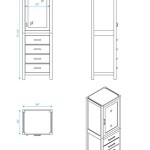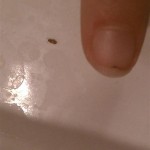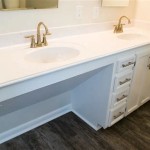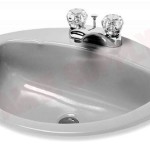Understanding the Plumbing Parts Under Your Bathroom Sink
The space beneath your bathroom sink, often overlooked, houses an essential network of plumbing parts that enable the smooth functioning of your bathroom. From supplying water to draining waste, this seemingly mundane area plays a crucial role in your daily hygiene routine. Understanding the various components within this under-sink plumbing system can not only aid in troubleshooting potential problems but also equip you with valuable knowledge for future maintenance and upgrades.
1. Water Supply: The Source of Clean Water
The water supply system under your bathroom sink typically starts with a pair of shut-off valves, usually located on the wall behind the sink. These valves control the flow of water to the cold and hot water lines supplying the faucet. The shut-off valves serve as a safety feature, allowing you to isolate the water supply to the sink in case of a leak or repair. The water lines themselves are typically made of copper or PEX tubing, connecting the shut-off valves to the faucet.
In addition to the shut-off valves and water lines, a water supply system may also include a pressure regulator. This device ensures that the water pressure reaching the faucet remains within an acceptable range. Excessive water pressure can damage the faucet and other plumbing components, while insufficient pressure can lead to slow water flow. A pressure regulator helps to maintain a consistent water pressure for optimal performance.
2. Faucet: The Point of Water Delivery
The faucet is the focal point of your bathroom sink, acting as the final link between the water supply and the user. Faucet designs have evolved over time, from basic single-lever models with a single handle to more complex designs incorporating multiple functions, such as spray nozzles and temperature controls.
While the appearance of the faucet may vary depending on personal preference and style, the underlying mechanism is fairly consistent. Inside the faucet, a cartridge or valve controls the flow and temperature of the water. Turning the handle activates internal components, adjusting the water flow and temperature to the user's preference. Faucet manufacturers typically provide specific instructions on how to repair or replace the cartridge or valve in case of malfunction.
3. Drain System: Waste Removal and Prevention of Odors
The drain system is responsible for efficiently removing waste water from the sink, minimizing odor and potential clogs. This system typically starts with a pop-up drain stopper in the sink basin, allowing you to easily block or release water flow. The stopper connects to a tailpiece, a short pipe that extends downwards from the sink basin to the P-trap, a U-shaped pipe filled with water.
The P-trap is a crucial component in the drain system, acting as a barrier to prevent sewer gasses from entering the house. The water trapped within the P-trap creates a seal, preventing odors from rising into the bathroom. The P-trap connects to the drain line, a pipe that extends from the sink to the main drain system. This drain line can be made of PVC, ABS, or copper, depending on the age and design of the plumbing system.
4. Understanding Potential Issues and Maintenance
By understanding the components of your under-sink plumbing system, you can become more proactive in addressing potential problems. Here are a few common issues and preventative measures:
Leaking Pipes:
Leaking pipes can be caused by corrosion, cracks, or loose connections. Inspecting the pipes regularly and tightening any loose connections can help prevent leaks.
Faucet Malfunctions:
Faucet issues, such as dripping, low water pressure, or difficulty in controlling temperature, often indicate a problem with the internal cartridge or valve. Contacting a plumber or replacing the cartridge can usually resolve the issue.
Clogged Drains:
Clogged drains are a common annoyance caused by hair, soap residue, or other debris accumulating within the drain pipes. Regularly cleaning the drain with a plunger or a drain snake can prevent clogs.
P-trap Problems:
Issues with the P-trap, such as leaks or a loss of the water seal, can lead to sewer odors. Inspecting the P-trap for leaks and ensuring that it is properly filled with water can help prevent these problems.

Kitchen Sink Drain Parts Diagram Decorating Ideas On A Budget Check More At Http Www Entropiad Bathroom Plumbing
How To Install Bathroom Sink Drain Queen Bee Of Honey Dos

Bathroom Sink Plumbing Installation Diy Montreal

Bathroom Sink Parts Diagram Plumbing Drain Kitchen Remodel

Parts Of A Sink The Home Depot

20 Bathroom Sink Drain Parts How They Works Stopper Plumbing

Parts Of A Sink The Home Depot

How To Fit A Bathroom Sink Diy Guides Victorian Plumbing

How To Change J Pipe Under A Bathroom Sink Ehow

How To Easily Connect The Plumbing For A New Bathroom Sink Hometips







